Kew Gardens in England is one of the world’s most renowned botanical gardens. Kew has a very long history and has seen and undergone many changes in its time. It is a place that has been farmed on, built upon, designed, land added to and removed, re-designed, re-built, over and over again by its various owners. It has been graced by the designs of Lancelot ‘Capability’ Brown and others of equally great import and reputation. While men deservedly bear the majority of the honors there are many women in Kew’s history that deserve more recognition. I will present this in two parts. The list is long, so let us begin.
Queen Caroline
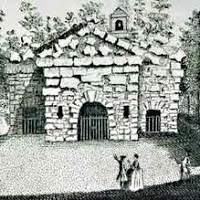
Following the Jacobean Rebellion of 1715, the owner of Richmond Lodge was forced to flee and abandon his lands. Soon after, the lands reverted to the crown and became the new home of the Prince and Princess of Wales. Prince George II of Hanover married Caroline, Princess of Brandenburg-Anspach in 1705.
Caroline was an intellectual and very much interested in the arts. She was acting regent while George was in Hanover and appeared to be the one who really ruled. After a quarrel with George I, the two moved into Richmond Lodge with its extensive grounds.
Caroline was an avid gardener. She knew the formal gardens of Herrenhausen in Hanover and Charlottenburgh near Berlin. She was also quite aware of the gardens of Versailles with their avenues, parterres, fountains and statuary. Caroline did not want the formality so popular everywhere. She is known to have said that she wanted to set about “helping Nature, not losing it in art”. And so a patron of the early English Landscape movement was born. She added houses and garden buildings such as the Hermitage, the Queen’s Pavilion, and Merlin’s Cave, although none survive today. When George was crowned king in 1727 he gave the grounds of Richmond to Caroline as a gift. Two years later the estate covered 400 acres. By the time of her death in 1737 she left debts of £20,000 for all her gardening activities.
Princess Augusta
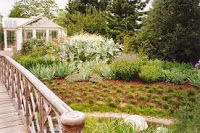
In 1736 Princess Augusta of Saxe-Gotha married Prince Frederick, Prince of Wales, son of George II and Caroline. They lived at the White House (renamed from the former ‘Kew Farm’ property) next door to Richmond Lodge.
Both Frederick and Augusta were avid garden enthusiasts. Frederick had many plans for the White House gardens. He added 75 acres of land and various trees, shrubs, water features, temples, and some Italian statuary. He wanted to include an aqueduct and a “mound to be adorned with the statues or busts of all these philosophers and to represent the Mount of Parnassus”. Unfortunately he died before implementing these plans.
Augusta took up Frederick’s plans with great speed and with the help of Lord Bute and Reverand Stephen Hales, botanists. With the mound and the aqueduct finished by 1754, she added the House of Confucius and the Chinese Arch. These were some of the earliest examples of chinoiserie that was influencing Europe at this time. William Chambers, architect, was hired to add even more buildings such as The Orangery, the Great Stove (the largest known hothouse), Alhambra, Domed Mosque and the Pagoda.
Princess Augusta had a keen interest in plant collecting. She was fortunate to belong to a time when the accessibility of species from new worlds was peaking. Comprised of both tender and hardy exotics she labelled them according to the new Linnaean system. The collection contained over 2,700 species and formed the basis of the Royal Botanic Gardens.
The Princess of Wales Conservatory was named for Princess Augusta, and opened by Princess Diana on July 28, 1987.
Queen Charlotte
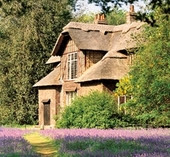
Augusta’s son George III married Charlotte-Sophia, Princess of Mecklenburg-Strelitz in 1761. After the death of Princess Augusta in 1772, Richmond Gardens, Kew Gardens and other properties came under single ownership for the first time. George III had been deeply influenced by Augusta and was involved in all aspects of the gardens. He was nicknamed ‘Farmer’ George for his interest in agriculture.
His wife Queen Charlotte shared his enthusiasm but she leaned towards botany. Along with four of her daughters, Charlotte took lessons in botany and in botanical illustration (in part from Margaret Meen). She increased the collections of new and exotic plants and purchased a herbarium to assist in their studies. The magnificent Bird of Paradise, Strelitzia reginae, was named in her honour. She did take pleasure in her cottage ‘ornee’, a thatched cottage near the menagerie created by Augusta. It was not unusual to see kangaroos, various species of cattle and birds from the aviary around the cottage grounds.
Queen Victoria

Granddaughter of King George III and Queen Charlotte, Queen Victoria added crown lands to the gardens. She opened the grounds to the public in 1898.
The Victoria Medal of Horticulture was established in her honour, and is conferred to 63 of Britain’s horticulturists. The Giant Amazon Waterlily (Victoria regia) is named after her as was the Victoria Regia House, now the Waterlily House.

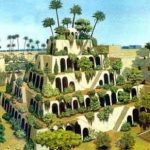
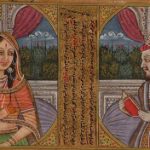
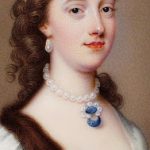
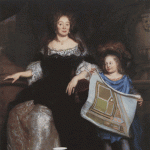
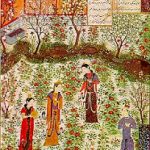
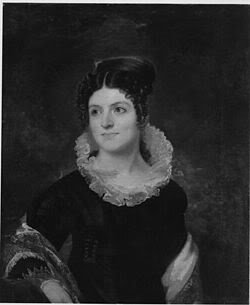
Dear Patty, As you say, Kew Gardens is a remarable place for all aspects of gardening and its history. I think that it is most imaginative of you to look at its development through the lives of the women who were associated with it and I look forward to reading more.
I really enjoyed this post despite knowing most of theinformation already.I think there is a tendency to highlight the men in horticulture at this time more so than the women.I have just read a fascinating piece about a woman in Western Australia who collected samples for Hooker – she collected over 300 and only one plant is named after her
I just loved British histories whether of their Royalties or their fabulous gardens.Im following your blog for more!
Really interesting story of the royal connections. Very pretty designs attributed to and named for Queens and a Princess. Does Queen Elizabeth fit into this?
GWGT- as far as I can see Elizabeth is not involved with Kew gardens other than for opening celebrations etc. The Queens Garden was made in her honour in 1959. Here's a link: https://www.kew.org/kew-gardensEdith – Thank you for the complement. I should have part two up in a few more days.patientgardener – How interesting. I would like to know who this woman is. Could you pass on the information.p3chandan – Thanks for your comment.The monarchy are interesting folk, I agree.